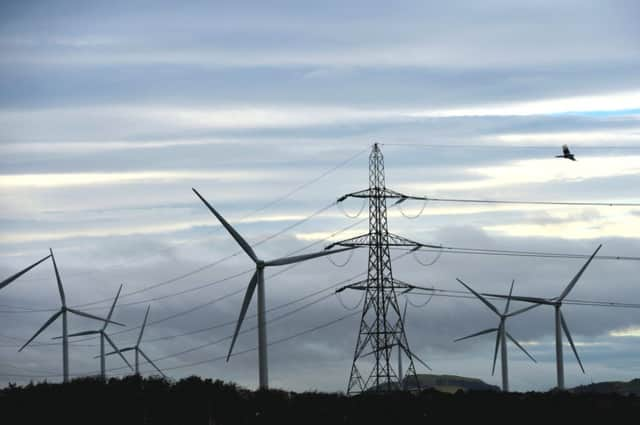Martin Hannan: Cranking up the renewable drive


As the world slowly gets to grips with climate change, Scotland stands on the brink of a bonanza in the development of renewable energy.
That is what we are often told, and there’s no doubt that Scotland leads the way in the race to develop the generation of electricity from wave and tidal power in particular.
Advertisement
Hide AdAdvertisement
Hide AdWind farms are already producing large amounts of electricity for Scotland, and the latest Scottish Government announcement that four new giant offshore wind farms – Inch Cape, Neart na Gaoithe, Seagreen Alpha and Bravo – have been given the provisional go-ahead could double the capacity of this type of electricity generation, with the four new farms providing power for the equivalent of 1.7 million homes.
Yet the creation of a Scottish renewables industry is being hampered by the fact that the existing power infrastructure, financial regime and subsidy system have not coped completely with the drive for renewables.
That is changing, as Paul Minto, partner specialising in renewable energy with top law form HBJ Gateley, explains. “We have wind, wave and tidal power, so Scotland is the place that developers will come to. Scotland is also empty in comparison to the rest of the UK, so it is an obvious place for developing renewables,” says Minto.
“The UK and Scottish governments introduced the subsidy regime in order to encourage the development of electricity production from renewable sources. We have had hydro power for decades, and that used to be the domain of the big utilities, but this financial subsidy has made it possible for smaller scale hydro developments and Scotland is perfect for that. That is a process which will continue for the foreseeable future.”
Some people object to wind farm developments, but as Minto notes, there could and perhaps should be a lot more of them in place already. “It is really only over the past decade that we have seen the turbines go up in numbers,” he says. “Getting planning consent is only half the battle. You have to get your grid connection and then build the wind farm.
“Right now in Scotland, only half of the wind farms which have gained planning consent have actually been built. Across the UK, the figure is 12 gigawatts of wind capacity having been consented and approved, but of that, only six gigawatts has actually been built.
“That’s a big gap, and there are several issues which have caused this gap. One of the main problems has been finance. It’s not been a good time to go to the banks for money over the past four years, but it’s getting better, and the banks are lending money.
“But a big issue is getting the connection to the National Grid. Scotland produces more electricity than it needs, so we export electricity via the Grid. There has never been enough Grid capacity, so the electricity network, particularly in Scotland, is undergoing a lot of work to increase the capacity..”
Advertisement
Hide AdAdvertisement
Hide AdThe changes to the subsidy regime could also affect renewables development. Minto says: “The UK government has introduced the new electricity market reform, with a new subsidy system called Contracts for Difference (CfD). You need to go to [market regulator] Ofgem and bid in an auction for subsidies for your wind farm. It used to be that you got the subsidy once you plugged into the grid, but now there is a limit on subsidies – the UK government calls this the Levy Control Fund and, from 2017, those who are prepared to take a lower subsidy will be the winners.”
There will still be subsidies available for wave and tidal power developments, and the European Union will back innovation with grants, as they did in the development – jointly with the Scottish Government – of the European Marine Energy Centre (EMEC) in Orkney, the world’s leading test-bed for wave and tidal power, where according to Minto, “seabed environmental issues” are a factor.
So, all in all, a work in progress.
SUBSCRIBE TO THE SCOTSMAN’S BUSINESS BRIEFING